Grouper fish are a fascinating and diverse institution of marine species located in oceans around the world. Known for their huge length, distinctive appearance, and delectable flavor, groupers are extraordinarily valued in industrial and leisure fishing. This manual will delve into the sector of grouper fish, exploring their precise traits, habitats, and culinary appeal. Whether you’re an angler, chef, or seafood enthusiast, information on the intricacies of grouper fish can decorate your appreciation for this tremendous species.
Introduction to Grouper Fish
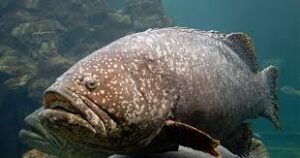
Groupers are a part of the Epinephelinae subfamily within the larger Serranidae circle of relatives, which includes seabass and anthias. These fish are famous for their strong bodies, big mouths, and company flesh. With over a hundred and fifty species, groupers inhabit tropical and subtropical waters, making them a key thing of marine ecosystems.
The allure of grouper fish extends past their superb size and appearance. Their slight taste and versatility in the kitchen led them to a favorite among chefs and domestic cooks alike. Whether grilled, baked, or fried, grouper offers a culinary revel in that satisfies even the most discerning palates.
Habitat and Distribution
Groupers are typically observed in heat, shallow waters, often close to coral reefs, rocky outcrops, and seagrass beds. Their geographical variety includes the Atlantic Ocean, the Gulf of Mexico, the Caribbean Sea, and the Indo-Pacific place.
Key Characteristics of Grouper Habitats:
Temperature: Groupers prefer waters with temperatures ranging from 23°C to twenty-eight°C (73°F to eighty two°F).
Depth: They are commonly located at depths of five to 50 meters but can inhabit deeper waters, relying on the species.
Environment: Groupers thrive in environments with considerable cowl, including coral reefs and rocky systems, where they can conceal and ambush prey.
Diverse Species of Grouper
The grouper circle of relatives incorporates a wide type of species, every with specific characteristics and habitats. Here are some of the most brilliant grouper species:
Goliath Grouper
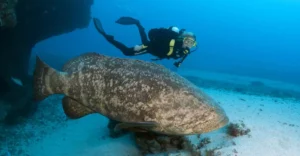
Description: The Goliath Grouper (Epinephelus itajara) is certainly one of the most important species, able to attain lengths of up to 2.5 meters (eight feet) and weighing over 360 kilograms (800 kilos). Its big length and mottled appearance make it an awe-inspiring sight.
Habitat: Goliath groupers inhabit heat coastal waters, frequently near shipwrecks, reefs, and mangroves within the Atlantic Ocean and Gulf of Mexico.
Behavior: These gentle giants are opportunistic predators, feeding on fish, crustaceans, and octopuses. Despite their size, they may be acknowledged for their docile nature and sluggish movements.
Red Grouper
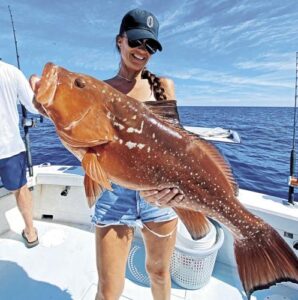
Description: The Red Grouper (Epinephelus morio) is diagnosed by using its reddish-brown shade and white spots. It is a popular choice for anglers and seafood lovers because of its tasty meat and relatively moderate length.
Habitat: Red groupers are found in the western Atlantic, especially around the Gulf of Mexico and the southeastern United States.
Behavior: This species is territorial and prefers rocky bottoms and ledges in which it can locate haven and prey on smaller fish and invertebrates.
Black Grouper
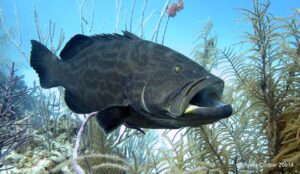
Description: The Black Grouper (Mycteroperca bonaci) is thought for its darkish color and robust frame. It is a treasured species for both business and recreational fishing.
Habitat: Black groupers inhabit coral reefs and rocky regions inside the western Atlantic Ocean, the Gulf of Mexico, and the Caribbean Sea.
Behavior: They are solitary predators, using their powerful jaws to capture prey, inclusive of fish and squid.
Nassau Grouper
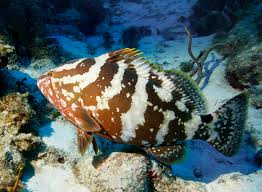
Description: The Nassau Grouper (Epinephelus striatus) capabilities a distinctive sample of stripes and spots, making it effortlessly recognizable. This species is significantly endangered due to overfishing and habitat loss.
Habitat: Nassau groupers are found in the Caribbean Sea and surrounding waters, regularly close to coral reefs and drop-offs.
Behavior: They are recognized for their annual spawning aggregations, in which large numbers accumulate to reproduce, making them prone to fishing pressures.
Fishing Techniques for Grouper
Fishing for grouper calls for specific strategies and systems due to their size, power, and habitat preferences. Here are some popular strategies:
Bottom Fishing: This involves using heavy tackle to fish close to the seafloor, in which groupers are commonly located. Anglers often use bait like squid, sardines, or live fish.
Trolling: Trolling with deep-diving lures or baits may be effective for catching groupers, particularly whilst focused on species that inhabit deeper waters.
Spearfishing: In regions in which spearfishing is allowed, divers can goal groupers with the aid of exploring coral reefs and rocky areas, taking advantage of the fish’s slow moves.
Tips for Successful Grouper Fishing:
Use Strong Tackle: Due to the grouper’s length and electricity, sturdy fishing gear is vital to handle the fight.
Fish Near Structures: Focus on areas with coral reefs, rocks, and other structures wherein groupers are probably to cover.
Be Patient: Grouper fishing often requires persistence, as those fish are cautious and might take time to technique bait.
Nutritional Benefits of Grouper
Grouper is not the most effective scrumptious however also full of important vitamins, making it a wholesome desire for seafood fanatics. Here are a number of the key nutritional benefits of grouper:
High in Protein: Grouper is a terrific supply of lean protein, which helps muscle boom and restore.
Rich in Omega-three Fatty Acids: These healthful fats contribute to heart fitness, reduce irritation, and help cognitive features.
Vitamins and Minerals: Grouper includes critical vitamins together with B12 and D, alongside minerals like selenium, phosphorus, and potassium.
Low in Calories: With its low-calorie content material, grouper is a great alternative for those searching for a nutritious meal without extra energy.
Conclusion
Grouper fish are a superb and versatile species that provide a wealth of culinary and nutritional blessings. With their numerous variety of species, specific habitats, and scrumptious flavor, groupers are a prized trap for fishermen and a pride for seafood lovers. Understanding the intricacies of grouper fishing, cooking, and conservation can enhance your appreciation for those ocean giants and make certain their persevered presence in our oceans.
Whether you are savoring a perfectly grilled grouper fillet or casting a line searching for these extraordinary fish, the world of grouper gives endless opportunities for amusement and exploration. Embrace the project, have fun with the flavor, and contribute to the conservation of this exceptional marine treasure.

